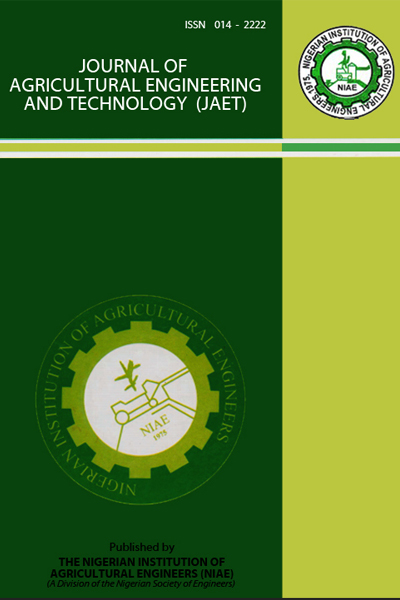EFFECT OF AVERAGING INTERVALS OF HYDROMETEOROLOGICAL VARIABLES ON THE DIURNAL TIME LAG ESTIMATION IN SAP FLOW DATA
Keywords:
Temporal averaging intervals, time lag, hydrometeorological variablesAbstract
The effect of temporal averaging periods of hydrometeorological parameters on the estimation of time lag for water transport in young cashew trees was investigated for 10 days, in a cashew orchard in Ghana. Sap flow (Sf) was measured using Granier sensors and above canopy eddy flux (Ec) was measured using an eddy covariance system. Measured weather variables include solar radiation (Rs), air temperature (Ta). relative humidity (RH), and wind speed (U₂). Evaporative demand (E), a surrogate for canopy transpiration, was estimated from these meteorological variables. Cross-correlation analysis (CCA) and a simple resistance-capacitance model were used to estimate the time lags (r) between the diurnal patterns of Ec and E, Ec and Sf of E and Sf as well as between Rs and other fluxes at 10 min, 20 min, and 30 min averaging intervals (Al), respectively. For Ec – Sf and the range of lags introduced, the CCA yields correlation coefficient (R) that vary from: 0.60-0.89 (A1-10min), 0.60-0.90 (AI-20min), and 0.62-0.94 (A1-30min), with each Al showing a different lag at maximum R. The most intensive Al shows that Sf lag Ec by 10 min whereas the time-series based on 20 min Al yielded a lag of 20 min while 30 min lag was observed for time-series based on Al of 30 min. The results of the simple resistance-capacitance model showed that time lag in this young orchard was generally lower than 10 min. Lags between Ec – Sf pairs showed a decreasing order, from 6.4 min at Al 10 min to about 2 min at AI-30 min. E was found to lag Ec by about 3.1 min, 2.5 min and 2.1 min, respectively with increasing averaging interval. This result showed that hydrometeorological variables should be recorded at appropriate averaging intervals so as to obtain good accuracy in the estimation of time lag, which, in turns, is needed in converting sap flow data to diurnal transpiration values.


